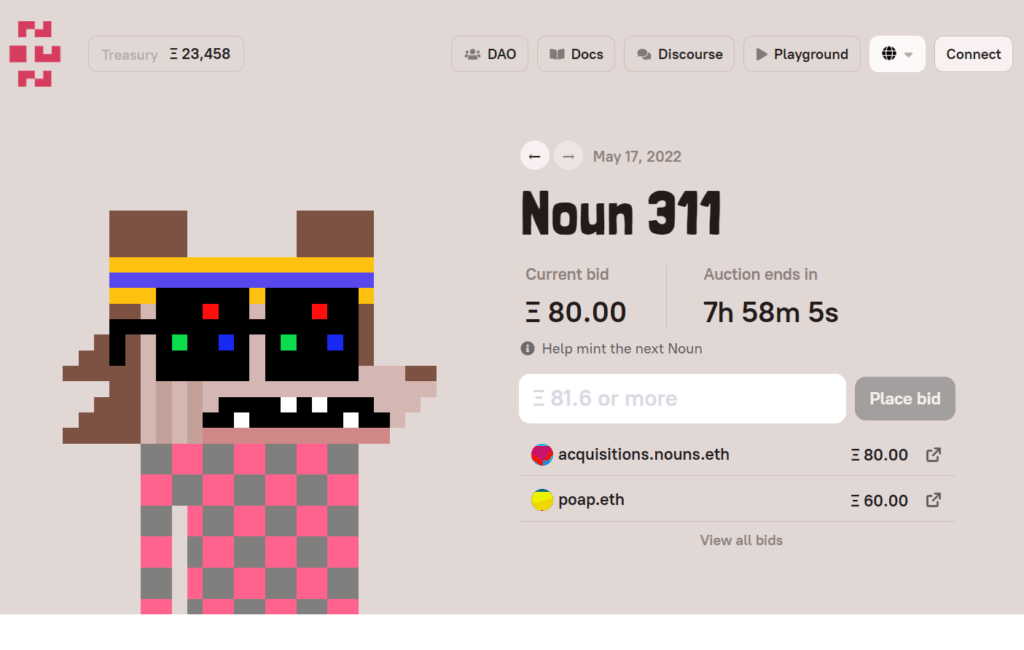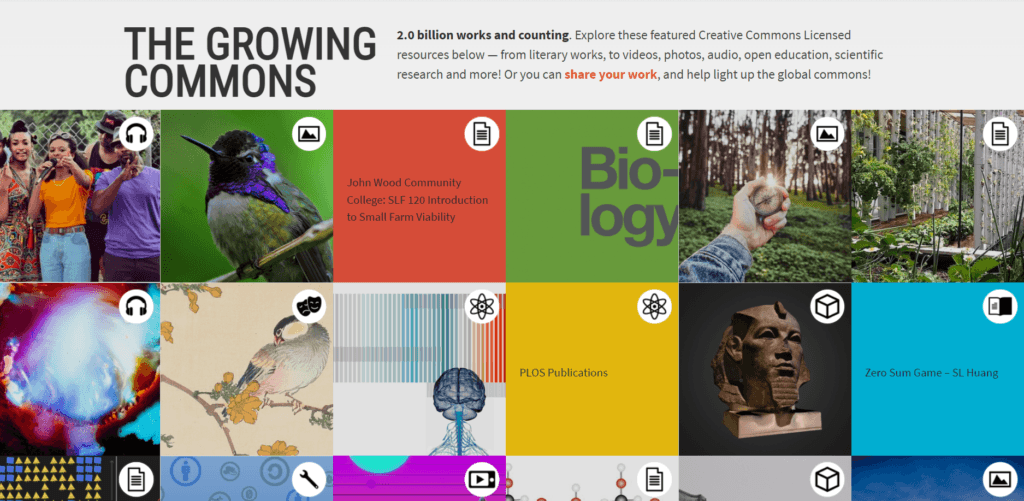Find out what is a CC0 NFT or also known as CC-Zero NFT and how they work.
CC0 or CC-Zero NFTs come with open source intellectual property (IP) rights. Hence, the NFT holder, NFT enthusiasts, and anyone from the public domain can use the actual artwork or creative work for real-world commercialization.
The billionaire Shalom Meckenzie, an Israeli entrepreneur and the major shareholder of the digital sports company DraftKings bought the Covid Alien CryptoPunk or CryptoPunk 7523 for $11.8 million as reported by the MarketWatch. But, he has limited IP ownership of the NFT since Larva Labs owns the majority of IP rights.
This is an inherent problem with creative works, both on the present internet and Web 3.0. Though you own the NFT and the artwork it represents, the non-fungible token (NFT) project developers don’t pass on exclusive rights to you. They keep it for their own profitability.
Creative Commons Zero aka CC0 NFTs should solve this problem by making NFT assets truly decentralized letting anyone utilize the content or creation for the greater good of the public domain.
Table of Contents
What Is a CC0 NFT?
Creative Commons Zero (CC0) titled creative works have no reserved rights for the creator. It enables artists, content creators, scientists, and educators to waive off their content ownership so that the material can freely exist in the public domain.
When an NFT project declares itself as CC0, they give away its IP rights on the content backed by the NFTs. As a result, the NFT holder or anyone else can build other creative or monetizable content based on those NFTs.
What Does CC0 Have to Do With NFTs?
When an NFT collector or investor buys an NFT, they think they get full ownership of the artwork or creative content behind the NFT. However, this is far from true. Simply put, by buying an NFT you only get the ownership of the particular content backed by the NFT.
This ownership is different from “right-click save-as” content copying. On the Ethereum (or any other) blockchain, there will be a ledger entry on your name and the content. All the information will be in a data block and again backed by a smart contract hash code.
Anyone can verify the smart contract on Etherscan to ensure that you really own the content. But, apart from the feeling of ownership, can you make several copies of it and sale? Can you partner up with a gaming company to have characters built based on your NFT?
Since most of the NFT project developers keep IP rights to themselves, you may not monetize your ownership. Some projects may allow monetization up to a certain limit.
For example, Yuga Labs have acquired the IP rights of CryptoPunks from Larva Labs. It has released the IP rights of CryptoPunks to the community that owns the NFTs. However, there’s a limit of $100,000/year of monetization value. Which may not be sufficient if you want to plan something big around your NFT.
CC0 NFTs can solve this problem by giving away all the IP rights to the community. And, that’s not only for the holders of the NFTs but for the entire public domain.
Murakami Flowers by the artist Takashi Murakami are another example. Although buyers can purchase this NFT on secondary markets, Murakami retains intellectual property rights over the collection, distribution and its artworks.
Read our guide: Who is Takashi Murakami?
The Benefits of CC0 NFTs
CC0 NFTs projects are more beneficial for NFT owners than the non-CC0 NFT projects. The followings are the most important advantages of CC0 NFTs:
- The creative work stays within the public domain. For example, the Mfers NFTs are available on Google Drive. Anyone can download the JPEG or PNG images and do whatever they like. Mostly, new NFT creators can get inspiration from these open creations and produce novel work for their own projects.
- The NFT artist, NFT development team members, NFT owner, and any random individual from the public domain can use the artwork for monetization through merchs, NFT derivatives, Skin NFTs, Companion NFTs, and Metaverse project.
- NFT creators, holders, and derivative builders don’t need to fight each other costly legal battles for the interpretation of IP rights over the NFTs. Since all rights are open to the public, there are no grey areas.
- CC0 NFTs encourage community activity and engagement. The NFT holders and project enthusiasts can discuss future roadmaps for the project so that their investment always stays correctly valued.
- CC0 licensing also promotes collaboration around the NFTs. Such activities pave the road for new IP content. Eventually, the crypto sphere flourishes with novel and engaging NFT projects.
In a nutshell, Web 3.0 is in its infancy and we need more brands, developers, creators, collectors, and investors. If the free for public use NFT project increases, more people will join the Web 3.0 community to contribute as derivatives creators. Also, this approach doesn’t hurt investors’ interests since the NFT ownership is securely kept on the blockchain.
Commercial Usage Trends of CC0 NFTs
Some of the commercial usages of CC0 NFTs are:
- Jenkins the Valet, Foobar, and Safa have created the Writer’s Room NFT project under the brand name Tally Labs. It utilizes IP rights of the BYAC project to create a collection of 6,942 NFTs like Valet Ticket, Yacht Keys, Yacht, etc. It has a market cap of 9,932 ETH.
- Manoff Market Gardens & Cidery used the commercial rights of World of Women WOW 9042 NFT to launch premium hard cider. WOW gives its NFT holders commercial rights. But, the collector can’t use the rights to promote hatred or intolerance.
Popular CC0 NFTs of the Cryptosphere
Want to create some cool derivative NFTs or merchs from popular CC0 NFTs? Here are some for your indulgence:
1. Nouns

One of the first NFT projects to give away NFT developers’ rights is the Nouns NFT project. There is no specific amount of NFTs in this collection. Since August 2021, the Noun DAO is auctioning one Noun NFT every day.
These are PFP NFTs with several rarity traits like backgrounds, accessories, bodies, heads, and glasses. Also, these are truly on-chain NFTs and not stored on any other networks like the Interplanetary File System (IPFS).
The Noun DAO is building up its Nouniverse which allows other creators to publish derivative NFTs based on the Nouns NFT project. All the proceeds from the Nouns NFT project go to Noun DAO’s treasury holding more than $65 million in ETH crypto coins.
2. HyperLoot
HyperLoot NFT project’s artwork collection is also in the public domain. The project developers let the public utilize its IP content for various purposes like:
- Include a HyperLoot NFT as a virtual character in-game apps.
- Display HyperLoot NFTs in a movie or TV show.
- Creators can produce fictitious comics using the HyperLoot characters.
Also, you don’t need to get a CC0 license for your HyperLoot-based merchs or NFT derivatives. You can keep your own rights for novel projects that you create by getting inspiration from the HyperLoot project.
3. Mfers

Mfers by Sartoshi is also a famous PFP NFT with a CC0 license. One of the members of the Mfers NFT project, Ivan Santana, uploaded all the artworks on Google Drive.
Many NFT creators have built on the Mfers project and minted their own NFTs. For example, you’ll find Ape Mfers, The Mfer Chicks, Invisible Mfers, 3D Mutant Mfers, etc., on OpenSea.
4. Timeless
Timeless Characters are the gaming character NFTs of the Treeverse NFT game. The Twitter handle visionofviii aka the VIII has created 9421 Anime NFTs and is listed on the OpenSea NFT marketplace. You can use these NFTs as skins inside the Treeverse game.
The NFT project is also CC0 and hence you’ll come across its derivatives on OpenSea like Treeverse and NFTrees.
5. Blitmaps
Blitmaps is a pixel art-based NFT project with a CC0 license. The project owners had created 100 original pixel arts and distributed that artwork to their community. The community collaborated on the initial project and created 1,600 siblings.
Later on, the project launched Blitmap heroes, The Blitnauts. The project has an elaborate roadmap for Blitnauts enemy NFTs, merchandise, etc. Since it’s an open project, anyone can take part in the Blitmaps universe for storytelling.
6. CrypToadz

The CrypToadz is yet another popular CC0 NFT project showcasing pixel art toads with different faces, accessories, backgrounds, hats, hairs, and eye glasses. The NFT project minted 6,969 NFTs of small amphibious creatures from Uniswamp.
Gremplin created these pixel arts and launched the NFT project with the help of his friends: Emmy, Motivateme, Sum1, Heeeee, Chanzero, BN89, Cat, and Dinfo. The NFT creator has also shared a backstory of the NFT project on the CrypToadz website with a hint of a metaverse in the future.
Its CC0 license enabled other NFT creators to build NFT derivatives and companion NFTs like CrypToadz Ghosts, CrypToads Fast Food, and Cryptoadz Abstract by 69Toadz.
CC0 or Copyright Free NFTs: The Final Word
CC0 NFTs are growing in numbers since the Web 3.0 community believes in the decentralization of content, liquidity, and crypto-assets. There’s no argument that Creative Commons Zero licensing will increase the community value as well as the NFT value.
However, not all NFT projects can see success with a CC0 IP license. For example, we need more NFTs like Karafuru NFT and Doodles that have an elaborate roadmap for future growth. As the project grows, so does the value of your NFTs.
If you like this article, check out our guide to POAP NFTs in crypto.

